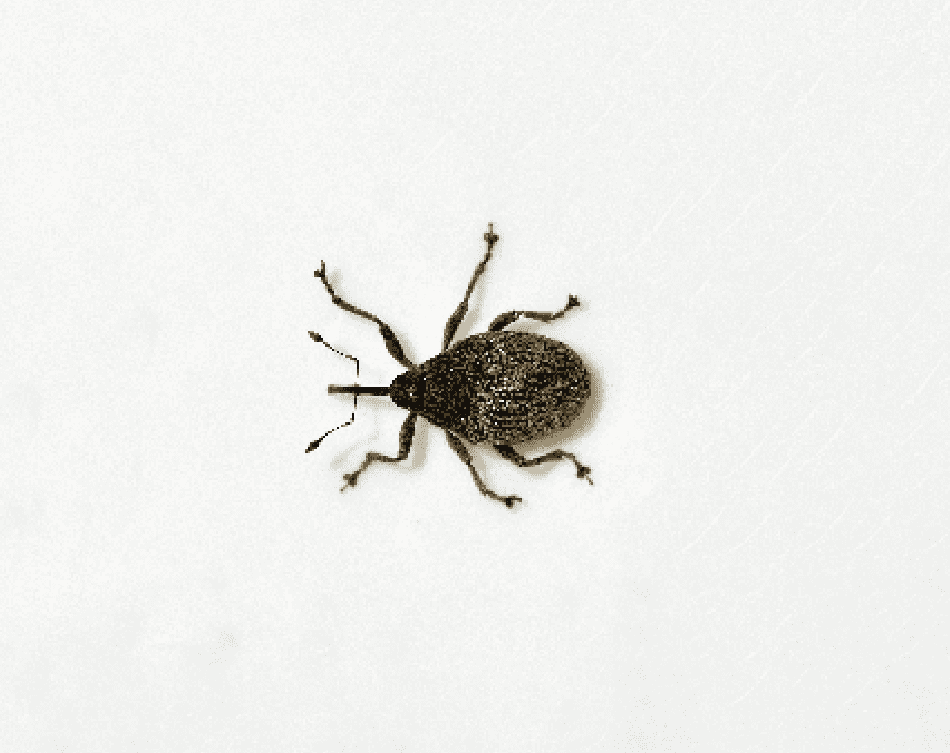MAIN INSECT PESTS IN SPRING
Find out about the main pests affecting oilseed rape in spring. Lidea offers you solutions to avoid damage to your rapeseed crop.


STEM WEEVILS

DESCRIPTION
Adult: 3 to 4 mm, oval shape, ash grey colour with black legs. Young: 7 to 8 mm, legless, white body with black head in the beginning of life cycle, later body changes to yellow with light brown head.
DAMAGE
Insects lay their eggs in the petiole, which may disrupt cell multiplication. Can lead to stem deformation and dissociation of the cortex from the pith.Dry conditions increase the risk of yield losses.
SOLUTION
Frequent field monitoring with the yellow bowl helps to detect insects earlier. It
is important to intervene with the verification method during the first eight days after detection. In case of early attacks, it is recommended to wait until the stem elongation stage before treatment.
POLLEN BEETLES

DESCRIPTION
Adult: 1.5 to 2.5 mm, flattened shape, shiny black with metallic green reflections. Antennae and legs can be black or red.
DAMAGE
Adult beetles feed on pollen and pierce flower buds causing bud abortion and pod
reduction. Susceptible stage is at button evolution (D1-F1). In severe attacks, yield loss can reach up to 30%.
SOLUTION
• Frequent crop monitoring from green to yellow bud phase.
• Varietal association may make it possible to avoid insecticide intervention. Consider early flowering varieties sown together with the main variety to create a natural trap attracting pollen beetles and to narrow the window for main variety
susceptibility.
• If the threshold exceeds 7 to 9 pollen beetles per plant before flowering stage, insecticide application is inevitable.
Cabbage seedpod weevils

DESCRIPTION
Adult: 2.5 to 3 mm in length, slate grey colour with black tips on legs. Larvae: 4.5 to 5.3 mm in length, white body with yellow on the lower side. Legless, with a brown head.
DAMAGE
Although larvae can destroy 4 to 6 kernels per pod, this damage remains relatively minor. More significant damage may occur with midge attacks.
SOLUTION
Damage caused by this insect is generally low, making insecticide intervention unnecessary, except where the threshold exceeds 0.5 weevils per plant at the beginning of pod evolution.
APHIDS

DESCRIPTION
Winged: 2.1 to 2.6 mm, globose, with rather short antennae, legs and cornicles. Wingless: 1.5 to 2.5 mm, yellowish on molting, waxy secretion gives them an ashy grey appearance. Grouped in very tight colonies.
DAMAGE
Insect multiplication leads to development of colonies and causes growth difficulties, abortions of information or reproductive plant parts. The earlier the attack in spring, the higher the risk, in particular during vegetation restart..
SOLUTION
Regular field checks on aphid presence until one month before harvest. Mild weather conditions are favourable to aphids. Treatment threshold: from 2 colonies/m2 at flowering stage.
For more information, download our rapeseed technical guide: click here.
